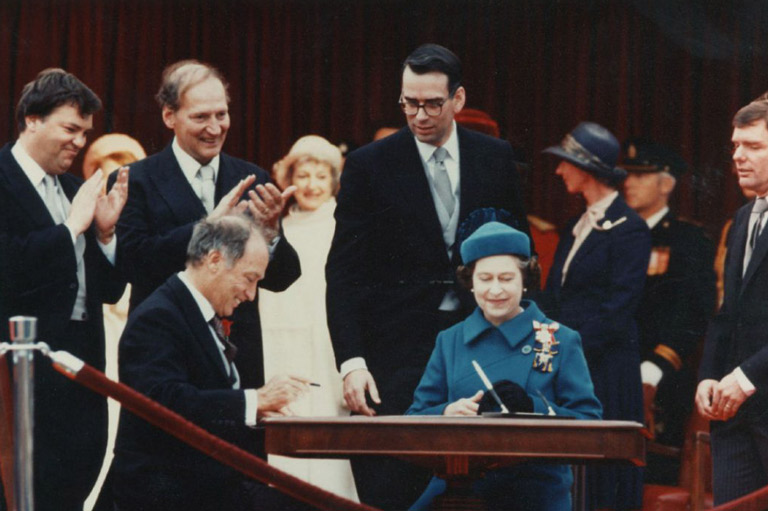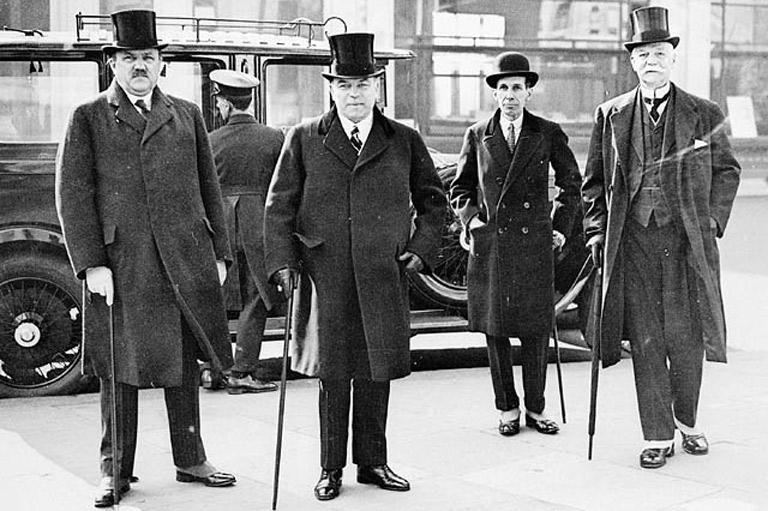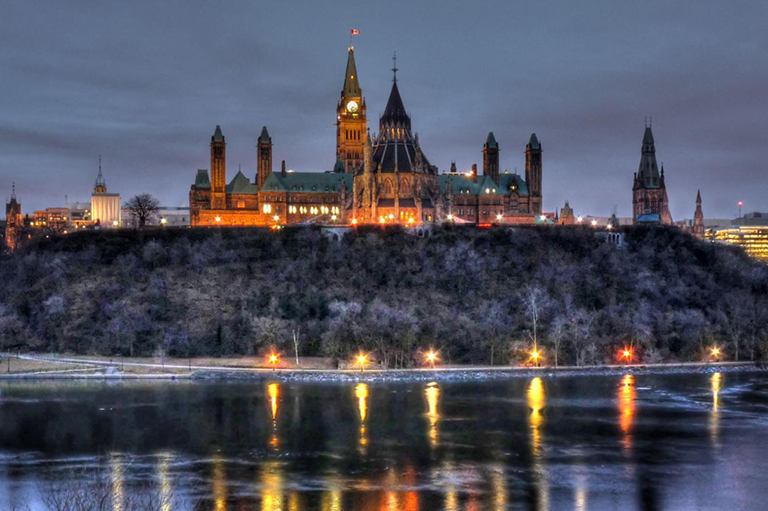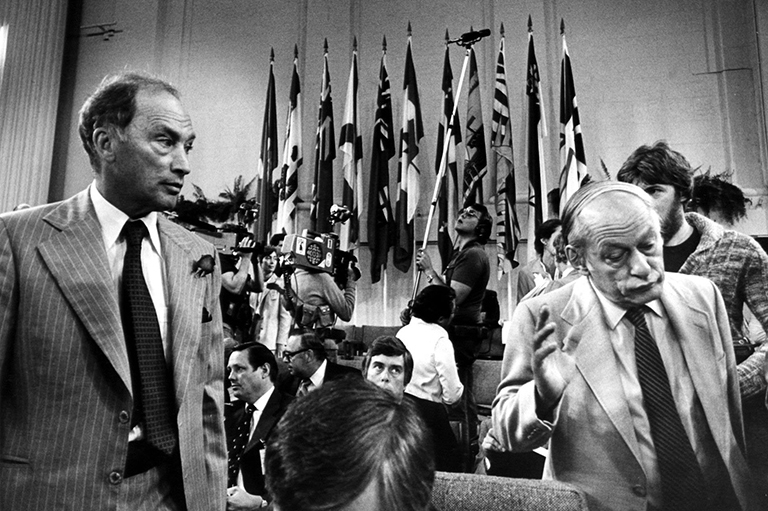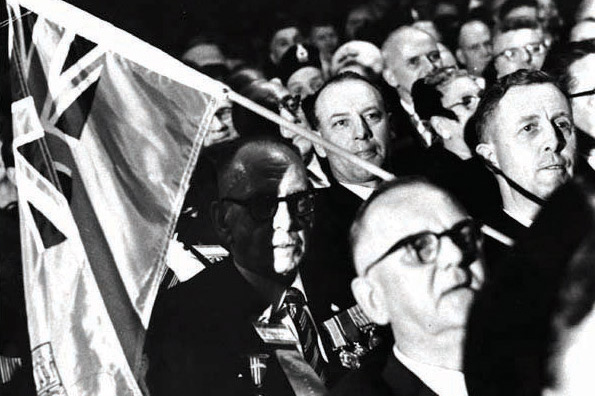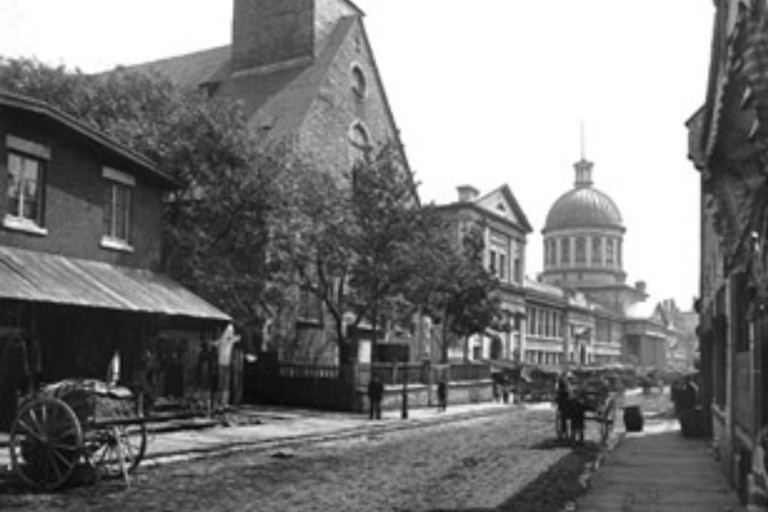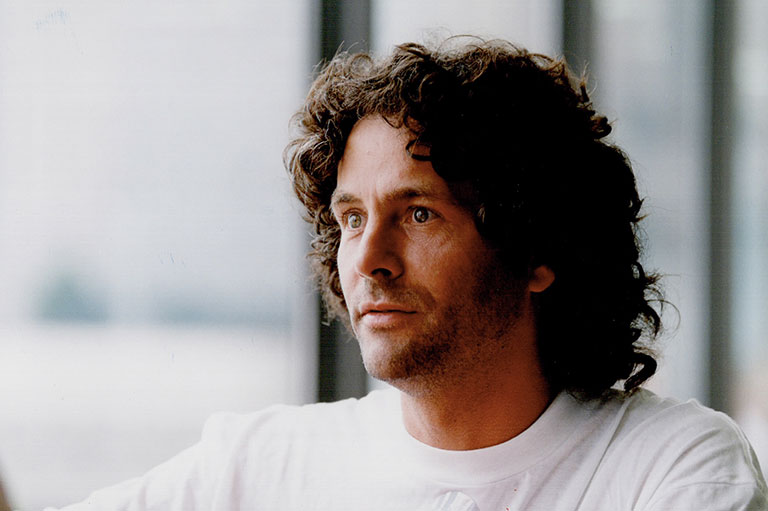The Great Charter
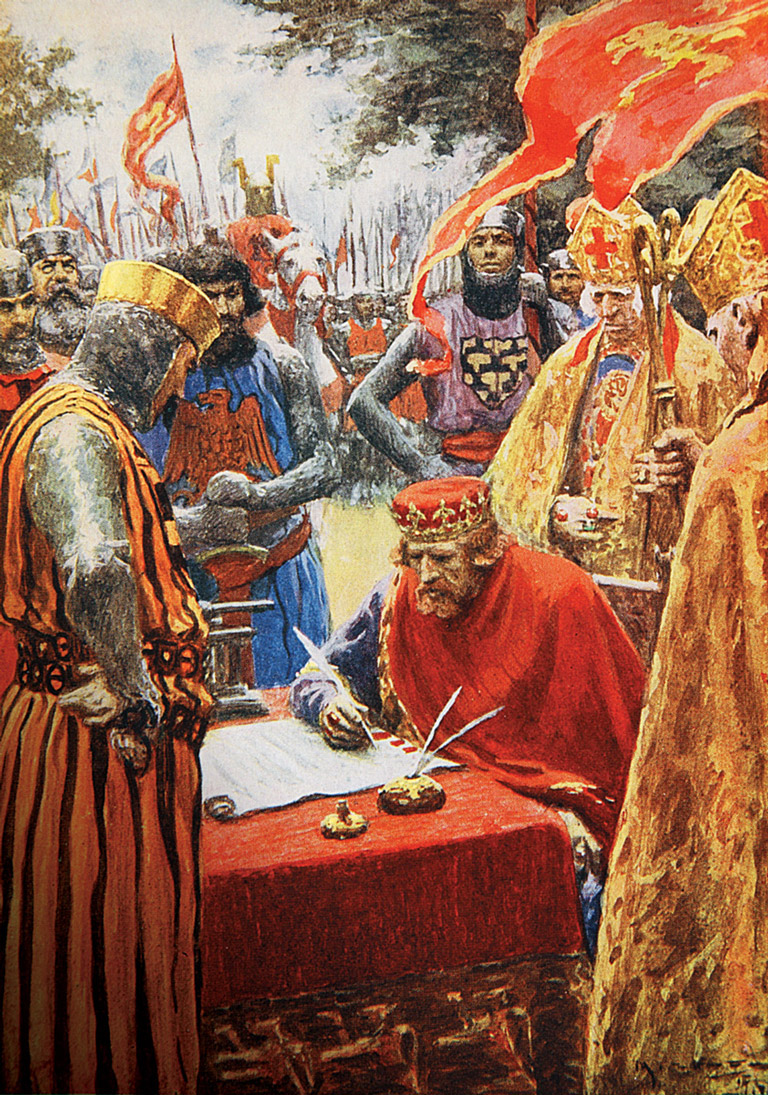
As it comes to Canada on its eight hundredth birthday, is Magna Carta simply interesting as an ancient thing we Canadians can gaze upon as a relic of history? Or is it still something to be struggled over?
Magna Charta Libertatum Angliae, the Great Charter of English Liberties, was born in strife and turmoil in 1215. With his barons’ swords not far from his throat, many of King John’s promises were very specific — and soon forgotten: “We will remove completely from their offices the kinsmen of Gerard de Athee, and in future they shall hold no offices in England.” But the document also laid down enduring principles of justice that would echo down the centuries: “To no one will we sell, to no one deny or delay right or justice.”
Today, Canadians can find in Magna Carta and its companion, the Charter of the Forest, declarations about the rule of law, guarantees of security of the person, the promise of environmental stewardship, a statement about the accountability of the Crown, and even an affirmation of women’s rights. Over the centuries, Magna Carta has matured into a venerable declaration of rights and a statement of the principles of justice, hardly posing a threat to anyone living under a government bound by law. In Canada, it seems that the liberties the medieval English fought over have long since been secured. It has become easy to celebrate Magna Carta complacently, as an ancient symbol of long-ago victories and as fodder for Monty Python routines: “We are all Britons. I am your king.” “I didn’t know we had a king. I thought we were an autonomous collective.”
Not everyone finds Magna Carta so safely mummified in history. If governments allowed Syrian-born Canadian Maher Arar to be kidnapped and tortured, where was Magna Carta’s promise of security of the person? If they secretly read our email, where is the promise of accountability? If authorities tolerate and encourage environmental degradation, where are the people’s rights to use the land? Throughout history, in fact, critics and change-makers have continued to invoke Magna Carta as a promise not yet kept. “The controversies through the ages about the meaning of Magna Carta are what keep it alive as a living document,” Peter Linebaugh, a prominent historian of Britain, said in an interview recently. This spring, as Magna Carta and the Forest Charter begin an unprecedented tour of Canada, they bring with them a remarkable heritage — and some debates that are very much alive.
Magna Carta on tour
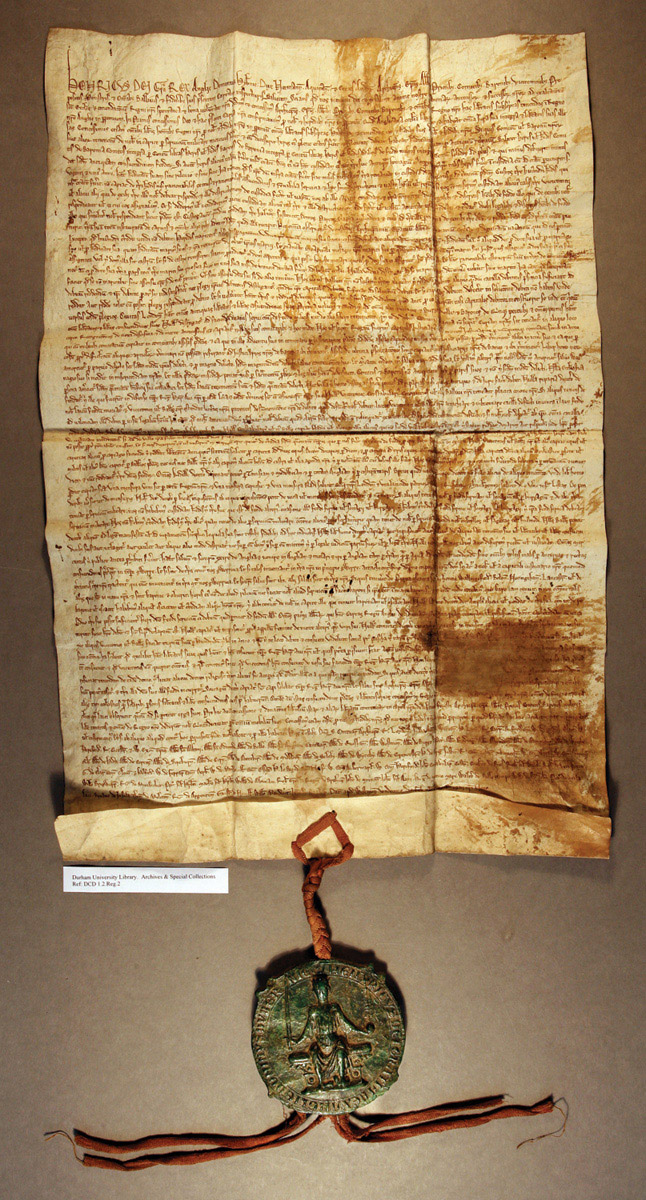
In the early 1200s, Magna Carta went viral in the best way medieval England could provide. In 1215 — and when it was reissued in 1216, 1217, and 1225 — multiple copies of the precious text were made and sealed with the royal seal. And, since the seal made each one a legal declaration, they were technically not “copies” but each equally valid.
These were dispersed across Britain, to the castles of barons, to county seats, to the great cathedrals. Over the centuries, most would gradually succumb to war and flood and vermin.
Ireland’s copy, the Magna Carta Hibernae, was destroyed as recently as 1922, in the Irish Civil War. But a few of the originals survive: Just four of the 1215 documents are known to exist, plus another nine from the following decade.
Fittingly, Magna Carta, a statement of the rights of citizens, will tour Canada this year through the agency of two ordinary Canadian citizens, Len and Suzy Rodness, a lawyer and a real estate manager in Toronto.
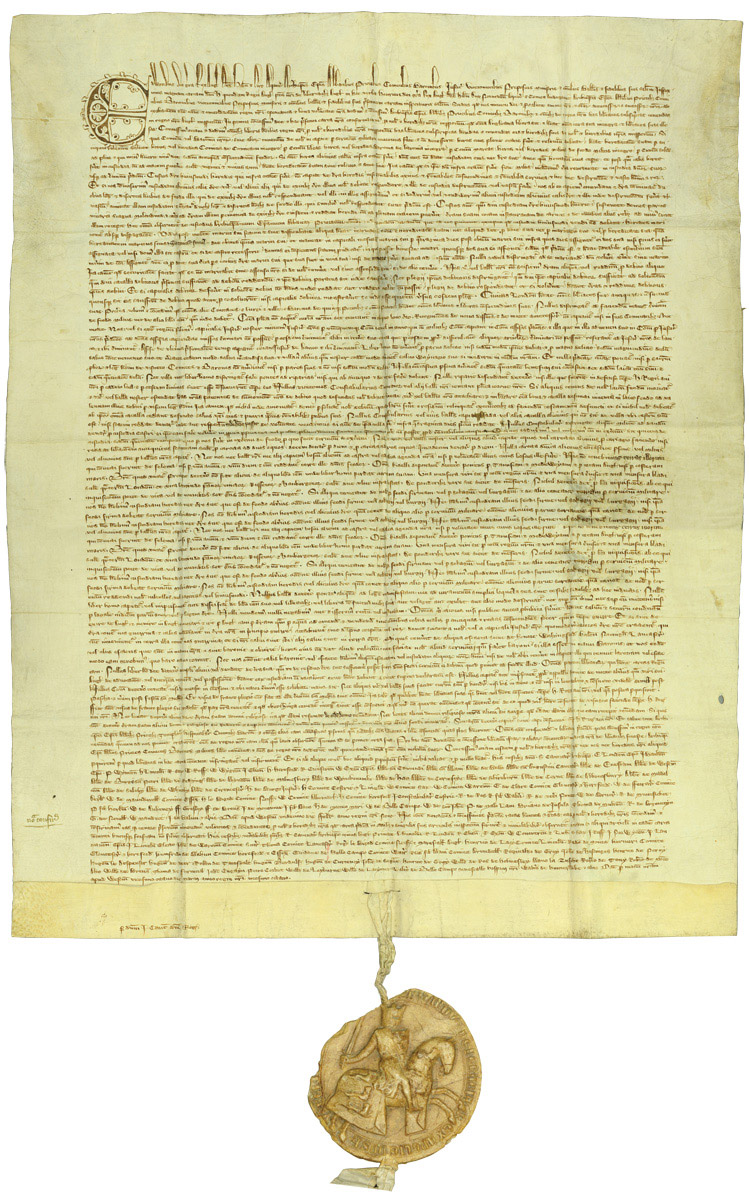
“We knew nothing,” exclaimed Suzy Rodness of the beginning of their quest to bring Magna Carta to Canada. But they knew a friend who had a relative in Durham, England, who in retirement had joined the Friends of Durham Cathedral.
With a thousand-year-old cathedral to maintain, the organization was alert to fundraising opportunities, and Durham Cathedral holds three copies of Magna Carta. They were issued in 1216, 1225, and 1300. It also also holds three Charters of the Forest from 1217, 1225, and 1300.
The Rodnesses visited Durham in 2011, met the Friends of Durham Cathedral, and committed themselves to bringing the cathedral’s precious documents to Canada in 2015 for an eight-hundredth-anniversary tour.
Originally, the cathedral’s 1225 Magna Carta was to be displayed but it was deemed to fragile to travel; the 1300 version will come to Canada instead.
“It takes time to organize everything, from the government approvals, to the arrangements with Durham, to the Canadian requirements,” said Suzy Rodness. To shoulder those burdens, the couple formed a non-profit organization, Magna Carta Canada, recruited a blue-ribbon board of volunteers and patrons, and set themselves to raise $2 million from sponsors and donors.
With the help of Lord Cultural Resources, the Toronto-based world leader in designing museum exhibits, Magna Carta Canada began preparing a fitting presentation of the documents and building a lively multimedia show about the history and significance of Magna Carta for Canada and for human rights and democracy worldwide.
Magna Carta and the Forest Charter will go on public display in four Canadian cities during 2015: at the Canadian Museum of History in Gatineau, Quebec, the Canadian Museum for Human Rights in Winnipeg, the Fort York Visitor Centre in Toronto, and the Alberta legislature in Edmonton.
Magna Carta has been in Canada once before. In 2010, a 1217 version from the Bodleian Library at Oxford University came to New York for the North American reunion of Oxford University alumni. At around the same time, the eruption of Iceland’s Mount Eyjafjallajökull disrupted flights to the United Kingdom, delaying its return to Britain. The Manitoba legislature seized the opportunity to negotiate a loan of Magna Carta for a three-month exhibition.
As it happened, the Queen was in Winnipeg at this time to unveil a stone from Runnymede, where Magna Carta had been endorsed. Appropriately enough, that stone became the cornerstone of the Canadian Museum for Human Rights.
Why should Canadians see Magna Carta? To see the thing itself, for one thing: Four thousand words of medieval Latin, written on a single crammed sheet of animal-skin parchment with an ink made of dust, water, and powdered oak-apple (tannic acid extracted from galls that grow on oak trees).
With 7 uniquely curated newsletters to choose from, we have something for everyone.
For another, because Magna Carta is, in the words of British historian Linda Colley, “one of the most iconic texts not just in British history but in global history.”
For Suzy Rodness, the appeal is simple and powerful: “Doing this, we are learning about our country, learning what made Canada Canada — human rights, parliament, the rule of law. Our sons, now in their twenties, perhaps they never knew how fortunate they are to live in this country in this time. Now they get it, I think. Magna Carta influences all the things we take for granted.”
John soon reneged on his charter commitments, but in just over a year he was dead.
Magna Carta becomes iconic
“King John had a knack for bringing people together in animosity to him,” said Carolyn Harris of Toronto, a recent graduate in British royal history and the author of Magna Carta and its Gifts to Canada, a companion volume for the charter’s Canadian tour.
King John, desperate for funds, had been plundering England, lunging after any source of money that might prop up his lands and his throne. The barons who were among his targets — their wives and children held hostage, their castles seized, their wealth extorted — considered killing John and putting a more pliable relative on the throne. Instead, they put forth a set of rules to bind the king.
At Runnymede in the Thames Valley, not far from Windsor Castle (and today’s Heathrow Airport), King John acceded to the barons’ demands. On June 15, 1215, they agreed on a guarantee of due process of law, limits on royal exactions, the people’s right to use the common lands, and a council of the barons to ensure that the king fulfilled his promises.
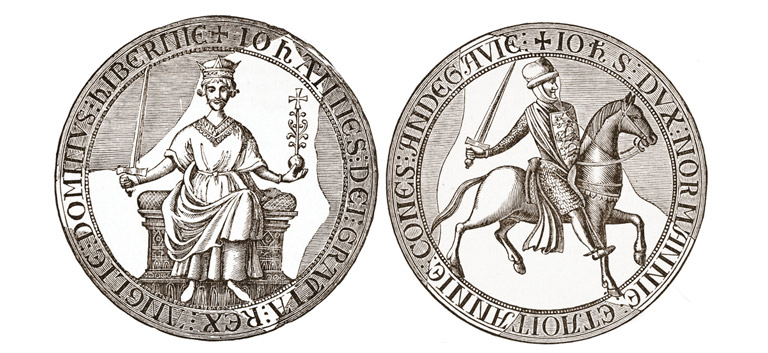
John soon reneged on his charter commitments, but in just over a year he was dead. His young son, Henry III, would go on to a remarkable fifty-six years on the throne and (for a king) a placid family life — “so of course he is forgotten!” laughs Harris.
But Magna Carta was reissued with Henry III’s seal, and Henry later agreed to annual sittings of parliament, with more than just the barons represented. The Magna Carta concept — that an English monarch was bound by a contract with his people — endured.
The fame and reputation of Magna Carta itself waxed and waned, Harris says. “It has been reborn and reinterpreted so many times!” After the Wars of the Roses, England looked to strong kings, and monarchs like the Tudors Henry VIII and Elizabeth I were happy to let the old charter of liberty become forgotten.
When Shakespeare wrote his play King John in the 1590s, Magna Carta did not rate a mention.
When English parliaments of the 1600s began to battle the Stuart monarchs and their exalted notion of the rights of kings, however, the great jurist Edward Coke excavated Magna Carta from the obscurity of ancient legal tomes.
It became again a symbol of liberty. Coke helped to draft charters for the first American colonies of England, too, and Magna Carta became part of the constitutional underpinning of British colonies and settlements.
Representative government and the rule of law became entrenched in the Anglo-American world after England’s Glorious Revolution of 1688 and the American Revolution a century later. Magna Carta began to seem safe, and tamed.
Any orator could roll out praise of Magna Carta as the first statement of liberty. Muralists painted Runnymede scenes in courthouses and civic halls from London to Cleveland, and in Canada, too. Just what it stood for seemed less important, when it seemed mostly to affirm the status quo.
For Britons and Canadians, Magna Carta meant constitutional monarchy, though for Americans it meant no monarchy at all. American courts repeatedly affirmed that property rights were the key point of Magna Carta, and before the Civil War property included slaves, who had no liberties and no due process. In an era of national and racial stereotypes,
Magna Carta was often claimed as the unique heritage of English-speaking peoples, something peoples of other colours and continents could not achieve.
Still dangerous? Magna Carta’s protest heritage
Peter Linebaugh, the veteran historian of eighteenth-century Britain, found himself reading the Charter of the Forest, the 1217 document that expands on the land-use guarantees of Magna Carta.
King John’s Norman forebears had asserted that they owned the forests and unoccupied lands of England. John sought to deny his subjects access to them or, better still, to charge them fees. For the barons and the commoners alike, however, the forests were precious: hunting grounds for the barons, and for ordinary people a vital source of firewood, plants, honey, pasturage, and game for the food pot.
Save as much as 40% off the cover price! 4 issues per year as low as $29.95. Available in print and digital. Tariff-exempt!
When he agreed to Magna Carta, John agreed that the vast royal forests would be “disafforested” — they would become common ground again, once more open for the use of all who needed them. After reading the Forest Charter, Linebaugh began to reconsider “his” eighteenth-century Britain, when respect for the commons was repudiated by the Enclosure Acts that transferred lands from common use to private ownership.
He considered the great famines of nineteenth-century India, after common land was converted to commercial cotton plantations; the manifesto of the Chiapas rebels of southern Mexico of the 1990s, which defended the village commons against industrial agriculture; and even the protests of Nigerian women in recent decades who have seen the oil industry destroy their only sources of firewood and clean water.
The protection of Magna Carta can be invoked in protest wherever justice is subverted, government becomes tyrannical, and liberties are trampled. “It became a pillar of Anglo-Saxon racism in the nineteenth century, yet it was also cited by national liberation movements — by Nelson Mandela at his trial,” said Linebaugh.
In his book The Magna Carta Manifesto: Liberties and Commons for All, Linebaugh aligns the Forest Charter with a deeper radicalism: that of indigenous peoples all over the world, striving to protect their livelihoods and their lifeways when the very lands on which they depend become state property and then private property from which they are fenced off. Magna Carta has indeed become iconic around the world — surprisingly often in ways that can still make crowned heads uneasy. For, as Linebaugh notes, the barons wrote a right of resistance into Magna Carta.
Magna Carta in Canada
Canada inherited from Britain the Magna Carta principles along with constitutional monarchy, the rule of law, and other foundations of government. Are there other Canadian aspects to these documents that were drafted centuries before Europeans colonized the Americas?
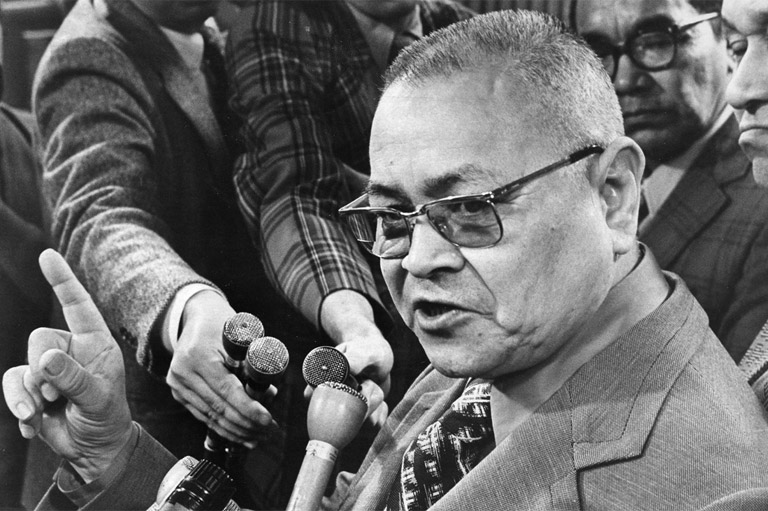
John Borrows is Canada Research Chair in Indigenous Law at the University of Victoria law school.
He is one of the scholars advising Magna Carta Canada about the meaning of the great charter for Canadians. And he is a member of the Ojibwa nation.
He talked recently about the 1973 Supreme Court of Canada case called Calder, a key precedent in Canadian treaty law, in which a judge described the Royal Proclamation of 1763 as “the Indian Magna Carta.”
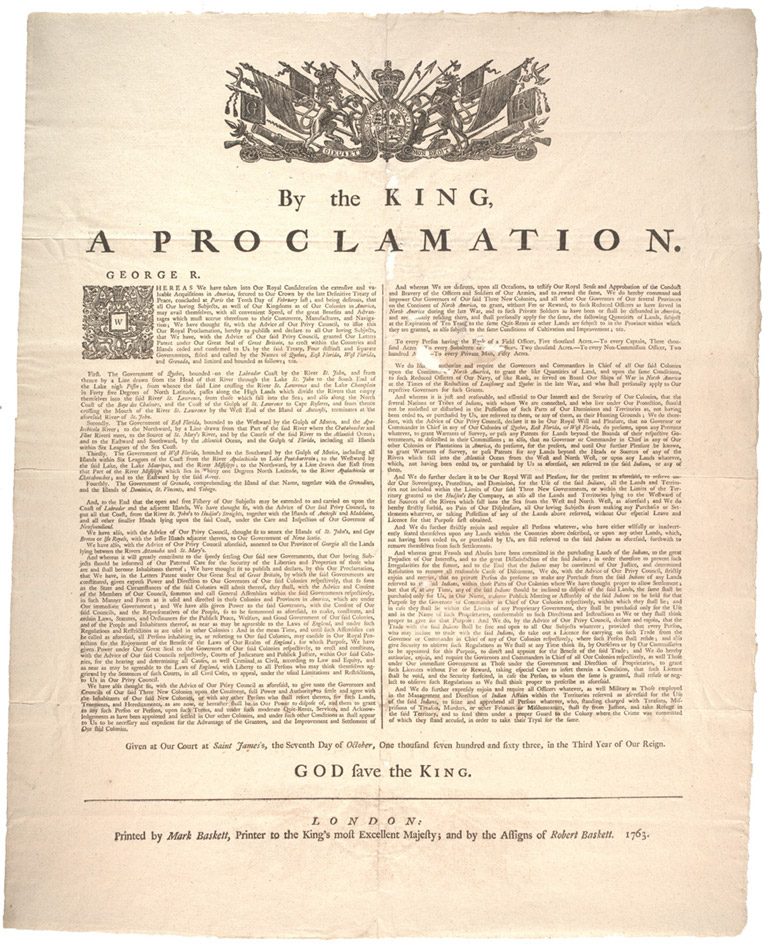
The Royal Proclamation required the Crown in Canada to negotiate treaties with Aboriginal nations, a duty that cannot arbitrarily be shirked.
The history of treaties suggests that the First Nations understood those treaties as sharing agreements, a plan to hold the land in common for the benefit of all, somewhat as the Forest Charter provided for England.
“Magna Carta is imperfect and it is early,” said Borrows, “but it does restrict the Crown vis-a-vis the citizens. Now we have Article 35 of the Canadian Charter of Rights and Freedoms, which affirms Aboriginal rights.
“Again, the state cannot just do what it wants. Magna Carta carries the understanding that concentration of power can be corrupting,” Borrows continued.
“We are imperfect humans, and we are never going to get there, but Magna Carta can be seen as a statement of goals — because goals are never realized. They point us toward our better selves. And they suggest why we need law — to set our better natures against our worst.”
Go see Magna Carta, just to gaze on something so ancient and so enduring. You may find yourself also engaging with ideas that still drive people engaged in fundamental struggles for justice and for rights around the world — and also here in Canada.
By the Numbers
On June 15, 1215, King John became the first English monarch to accept a charter of limits on his power as imposed by his subjects. Neither the king nor his rebel barons expected the agreement to last for very long, but Magna Carta inspired future generations and provided the foundation for English common law, which spread throughout the Englishspeaking world, including Canada. In 2015, a surviving copy of Magna Carta and a companion document, the Charter of the Forest, will tour Canada. — by Carolyn Harris
17
Years of King John’s reign when he affixed his seal to Magna Carta.
25
Number of barons who stood surety for the enforcement of Magna Carta.
63
Number of clauses scholars find in the 1215 version.
39
Number of the clause that sets a precedent for trial by jury, stating, “No free man shall be seized or imprisoned ... except by the lawful judgment of his equals or by the law of the land.”
3
Months that passed between John accepting and then repudiating Magna Carta.
23
Number of surviving copies of Magna Carta that date between 1215 and 1300.
We hope you’ll help us continue to share fascinating stories about Canada’s past by making a donation to Canada’s History Society today.
We highlight our nation’s diverse past by telling stories that illuminate the people, places, and events that unite us as Canadians, and by making those stories accessible to everyone through our free online content.
We are a registered charity that depends on contributions from readers like you to share inspiring and informative stories with students and citizens of all ages — award-winning stories written by Canada’s top historians, authors, journalists, and history enthusiasts.
Any amount helps, or better yet, start a monthly donation today. Your support makes all the difference. Thank you!
Themes associated with this article
Advertisement
You might also like...

Canada’s History Archive, featuring The Beaver, is now available for your browsing and searching pleasure!

